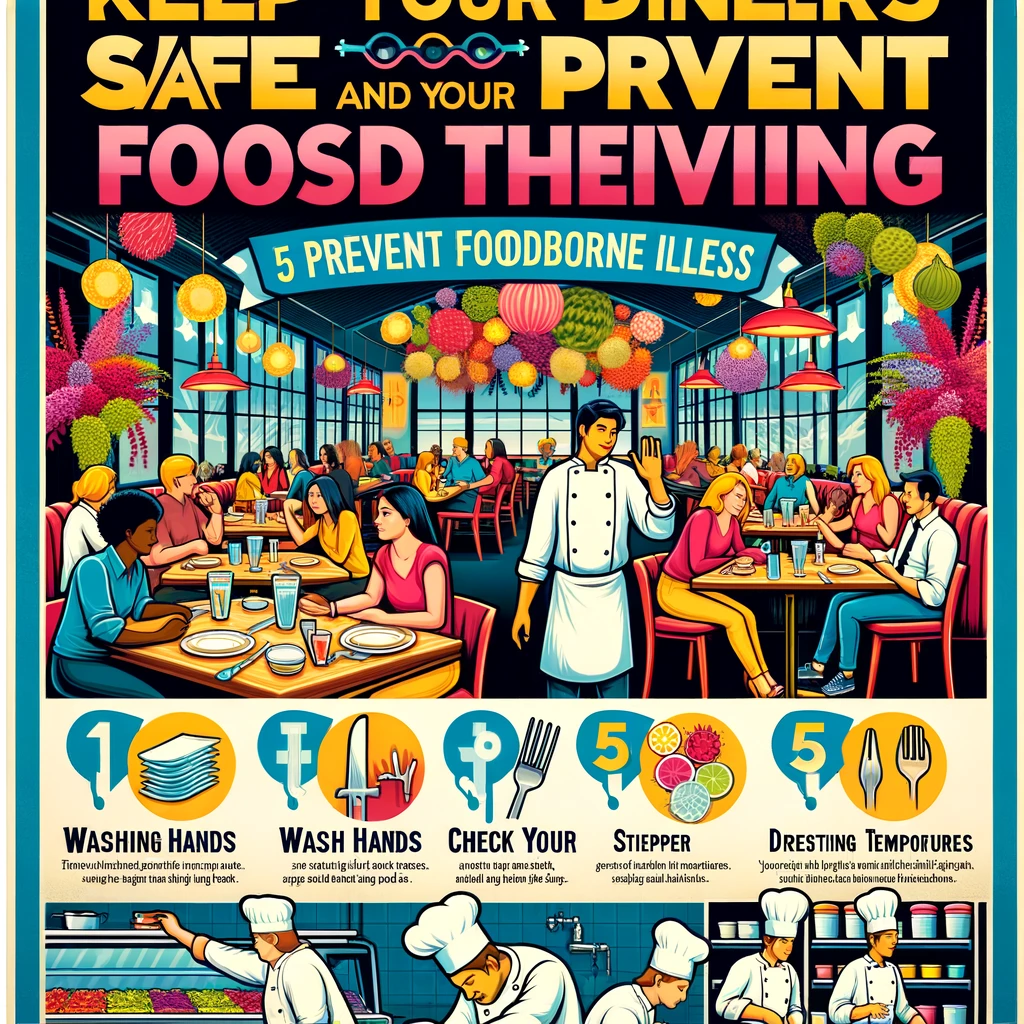Every year, millions of people fall ill from foodborne illnesses, often contracted at restaurants. As a restaurant owner, protecting your customers and your business from this preventable danger is paramount. Here are 5 key steps you can take:
1. Handwashing: The Unsung Hero:
- It’s simple, yet crucial. Make handwashing the cornerstone of your food safety program. Ensure proper handwashing stations are readily available and accessible throughout the kitchen.
- Train your staff on proper handwashing techniques and emphasize frequent washing: before and after handling food, using the restroom, changing gloves, and more.
- Eliminate excuses by addressing issues like sink availability and time pressure. Remember, proper hand hygiene can prevent outbreaks of norovirus, E. coli, and salmonella.
2. Cleanliness: A Three-Tiered Approach:
- Not all cleaning is created equal. Train your staff on the three levels of cleanliness:
- Cleaning: Removing visible dirt and debris.
- Sanitizing: Using chemicals to kill bacteria on surfaces.
- Disinfecting: Leaving a chemical disinfectant on surfaces for a specific time to kill viruses and other pathogens.
- Stress the importance of following specific instructions for each level to ensure true cleanliness and prevent contamination risks.
3. Separate to Conquer: Prevent Cross-Contamination:
- This occurs when harmful microbes jump from one food item to another. Create designated areas in your kitchen to prevent raw meat, produce, and allergens from mingling.
- Use separate utensils and cutting boards for different food types. Thoroughly clean and sanitize work surfaces after each use, especially after handling raw ingredients.
4. Educate Your Diners: Knowledge is Power:
- While you strive for perfection, sometimes undercooked food might slip through. In restaurants specializing in high-risk foods like steak or sushi, include disclaimers on your menu highlighting potential risks associated with undercooked items.
- Train your wait staff to inform diners about these risks, empowering them to make informed choices.
5. Empower Your Team Through Training:
- Food safety isn’t just for chefs. Ensure all employees, from managers to wait staff, receive certified food safety training.
- Use a variety of engaging training materials to cater to different learning styles and experience levels.
- Regularly reinforce the importance of food safety within your organization, making it a shared responsibility and a top priority.
Bonus: Best Practices for Restaurant Owners:
- Develop a formal food safety plan outlining clear responsibilities and procedures.
- Gain buy-in from management by highlighting the reputational and financial risks of foodborne illness outbreaks.
- Share the plan with all staff and ensure they understand and follow it meticulously.
- Consider food safety insurance to further protect your business from potential liabilities.
By implementing these essential steps and best practices, you can create a culture of food safety in your restaurant, protecting your customers, your reputation, and your bottom line. Remember, food safety is a continuous journey, not a one-time destination. Stay vigilant, educate your team, and prioritize this essential aspect of responsible restaurant ownership.

